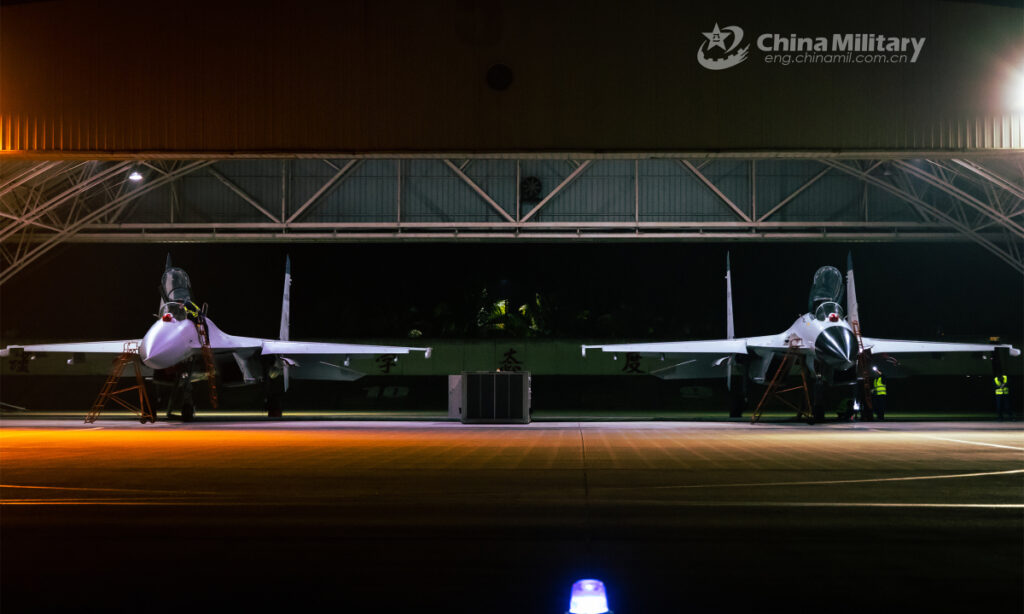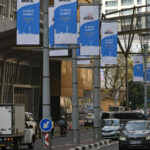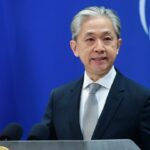The Chinese People’s Liberation Army (PLA) Southern Theater Command recently conducted a maritime strike and air-to-air combat exercise featuring newly enhanced fighter jets operating from an islet-based airfield.
Organized by an aviation brigade affiliated with the navy of the PLA Southern Theater Command, the round-the-clock drill focused on the characteristics of the islet-based airfield, China Central Television (CCTV) reported on Wednesday, without naming the islet.
During the exercise, four fighter jets took off from the airfield one by one and formed two groups of two before moving stealthily toward a designated region by skimming the sea.
Upon approaching maritime targets, they immediately pulled up to gain altitude and carried out mock strikes.
After the maritime strike training, the two fighter jet groups switched to commence an air-to-air combat exercise. The red team launched covered attacks by greatly changing flight stances in an intense dual with the blue team above the sea.
The ground maintenance crew quickly conducted checks and carried out refueling of the aircraft after their return, which allowed them to sortie again.
Islet-based airfields are characterized by fast-changing weather, complex bird conditions and the lack of objects of reference while flying over the sea, Major Tong Liguang, a member of the brigade, said in the CCTV report.
Compared with flights from land-based airfields, islet-based airfields demand higher psychological fortitude, skills and tactical capabilities from pilots, as they mostly have to rely on instruments and navigation devices to determine their stances and locations, Tong said.
The exercise omitted conventional methods, instead closely focusing on the environmental traits of the airfield, which highlighted new changes in air combat tactics, Captain Li Yingli said in the report.
“By finding problems and gaps in real confrontations, we pilots effectively improved our skills and tactical capabilities,” Li said.
Based on an analysis of the report footage, a Beijing-based military expert who requested anonymity told the Global Times on Wednesday the fighter jets that took part in the exercise were two variants of the J-11B, one of an older configuration with a black nose and one of a newer configuration with a gray nose.
It is believed that the gray-nosed J-11B is enhanced with an active electronic scanning array (AESA) radar that significantly improves its situational awareness and enables the fighter jet to carry the more powerful PL-10 short-range combat missile and the PL-15 beyond-visual-range missile, making the fourth-generation fighter jet close to the 4.5 generation, the expert said.
The latest exercise shows that this upgraded version of the J-11B is now operable on islets in the South China Sea, the expert added.
(Global Times)




